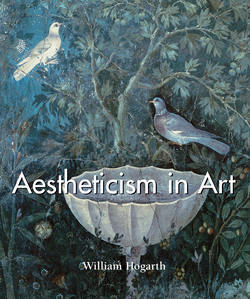Читать книгу Aestheticism in Art - William Hogarth - Страница 5
На сайте Литреса книга снята с продажи.
General Rules of Composition
Of Variety
ОглавлениеHow great a share variety has in producing beauty may be seen in the ornamental part of nature. The shapes and colours of plants, flowers, leaves, the paintings in butterflies’ wings, shells, etc. seem to be of little other intended use than that of entertaining the eye with the pleasure of variety.
All the senses delight in it and are equally averse to sameness. The ear is as much offended with one even continued note, as the eye is with being fixed to a point, or to the view of an empty wall. Yet when the eye is glutted with a succession of variety, it finds relief in a certain degree of sameness, and even plain space becomes agreeable when properly introduced and contrasted with variety, thus adding to it even more variety.
I mean here, and everywhere indeed, a composed variety; for variety uncomposed and without design is confusion and deformity.
Observe that a gradual lessening is a kind of varying that provides beauty. The pyramid diminishing from its basis to its point, and the scroll or volute, gradually lessening to its centre, are beautiful forms. So, also, objects that only seem to do so, though in fact they do not, have equal beauty, and thus perspective views, those of buildings are always particularly, pleasing to the eye.
Giotto Di Bondone (attributed to), The Expulsion of the Demons from Arezzo, 1297–1299. Fresco, 270 × 230 cm. Upper Basilica of San Francesco, Assisi.
School of Piero della Francesca (Luciano Laurana or Giuliano da Sangallo?), Ideal City, c. 1470. Oil on wood panel, 60 × 200 cm. Galleria Nazionale delle Marche, Urbino.
Andrea Mantegna, The Lamentation over the Dead Christ, c. 1490. Tempera on canvas, 68 × 81 cm. Pinacoteca di Brera, Milan.
